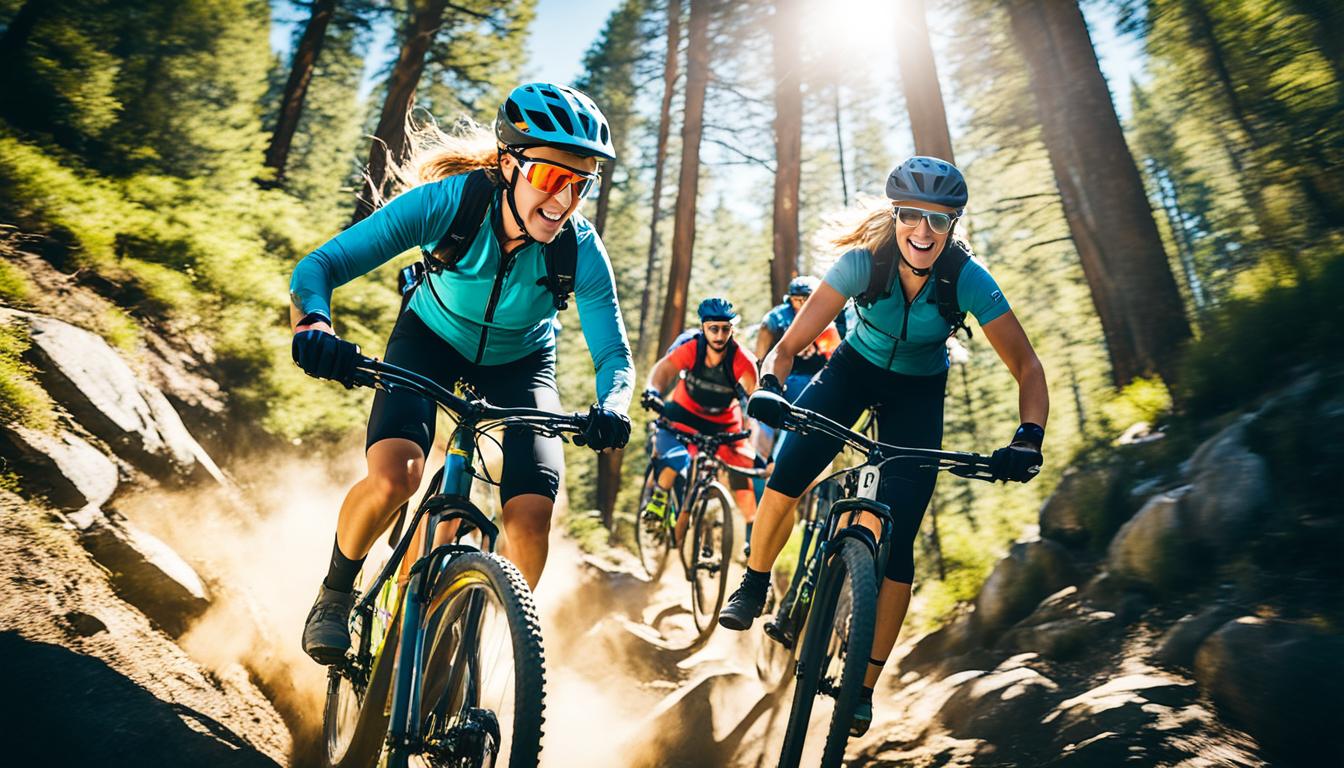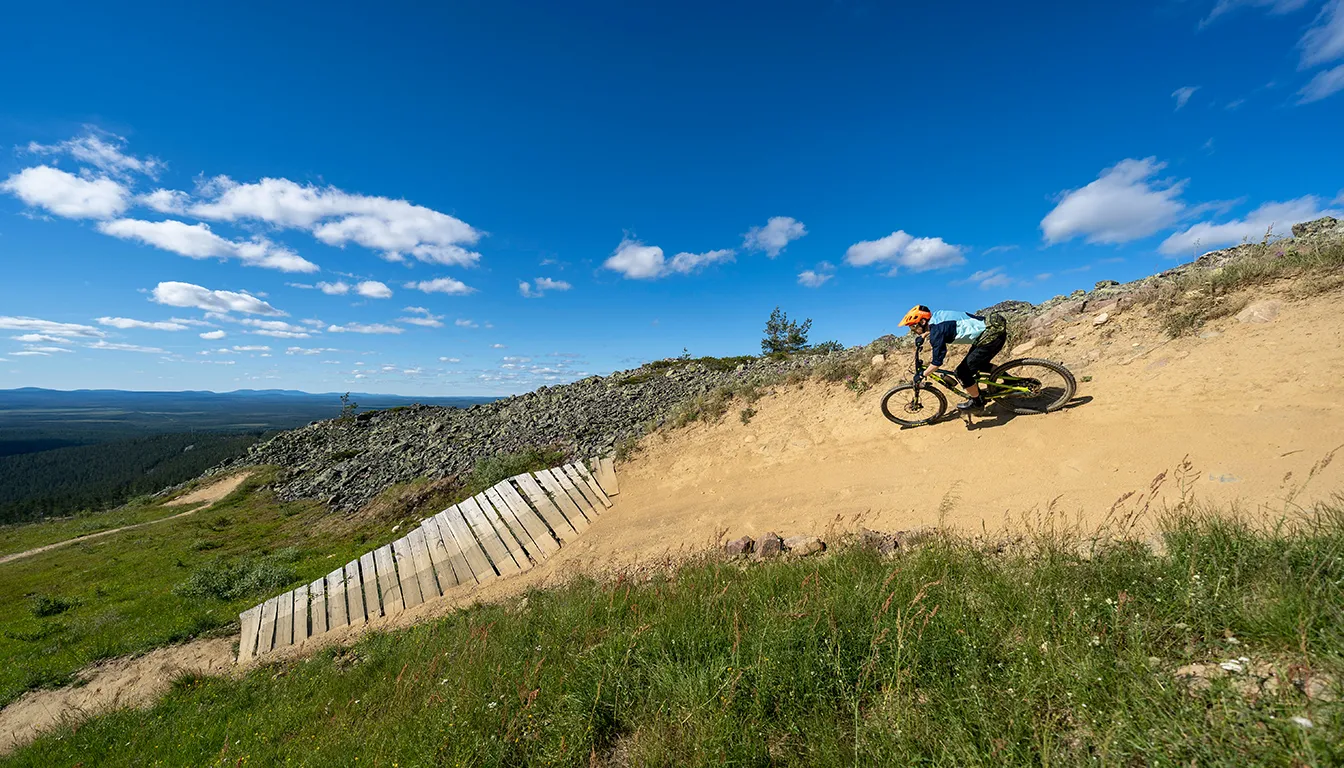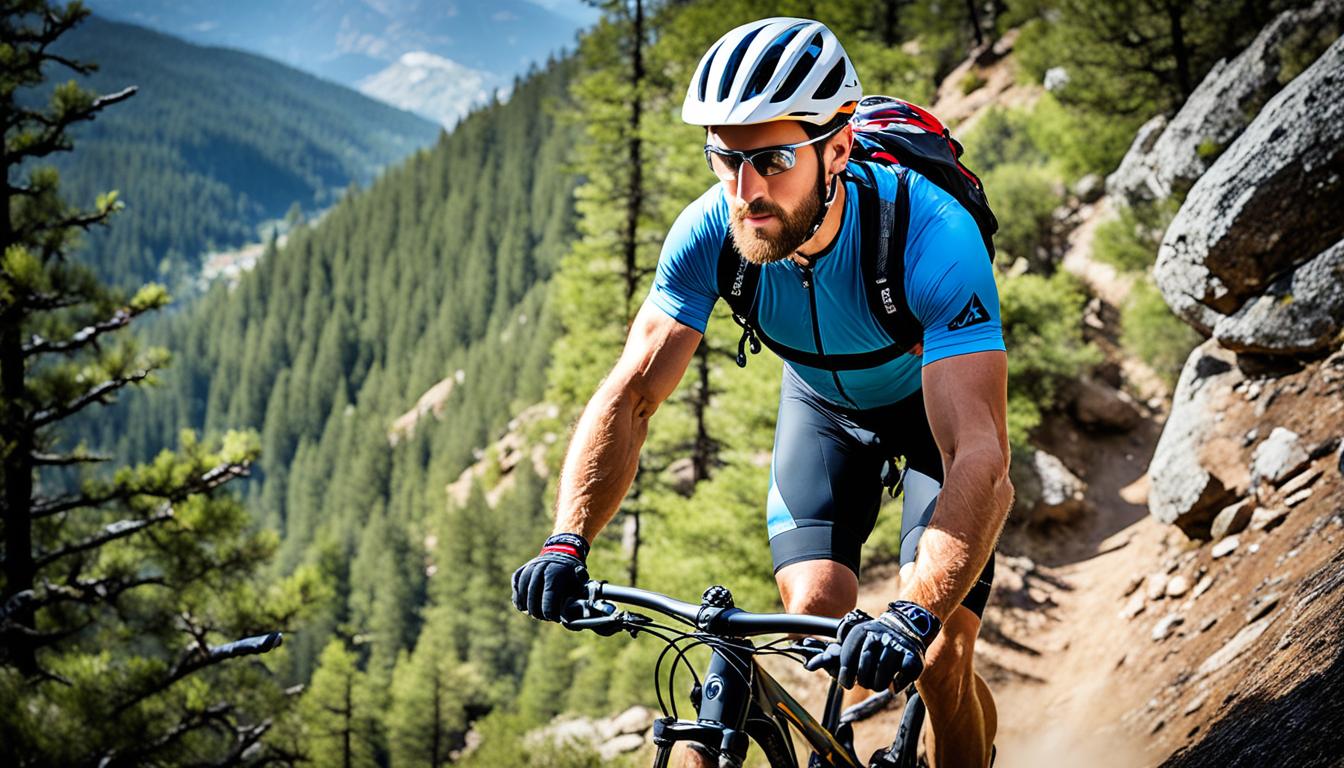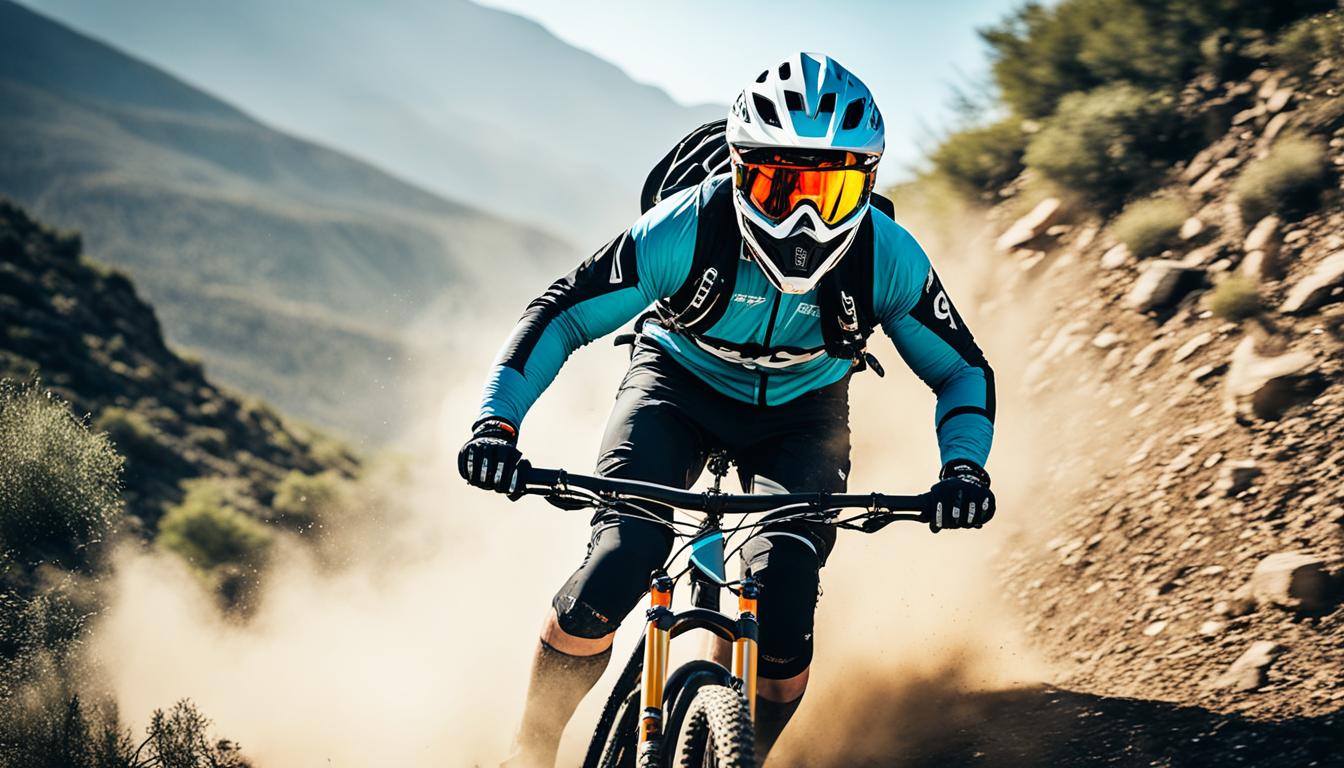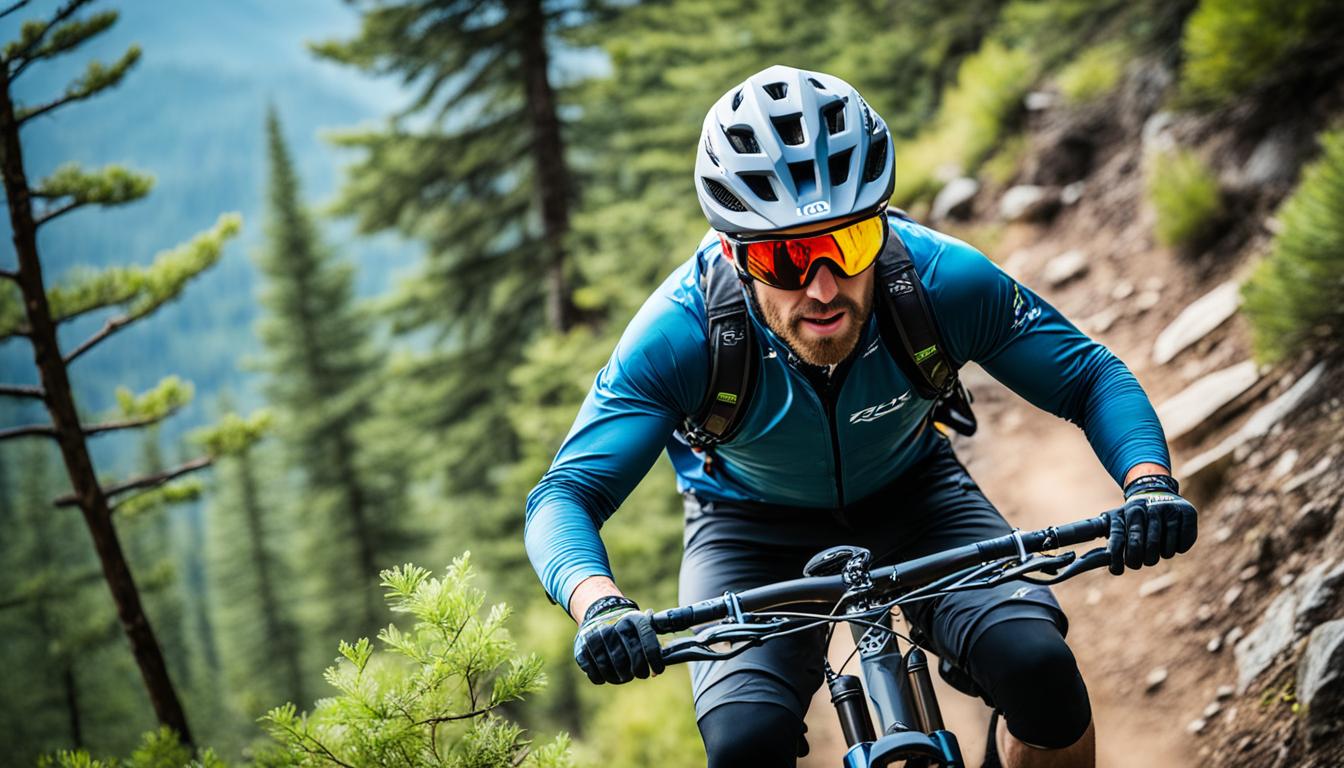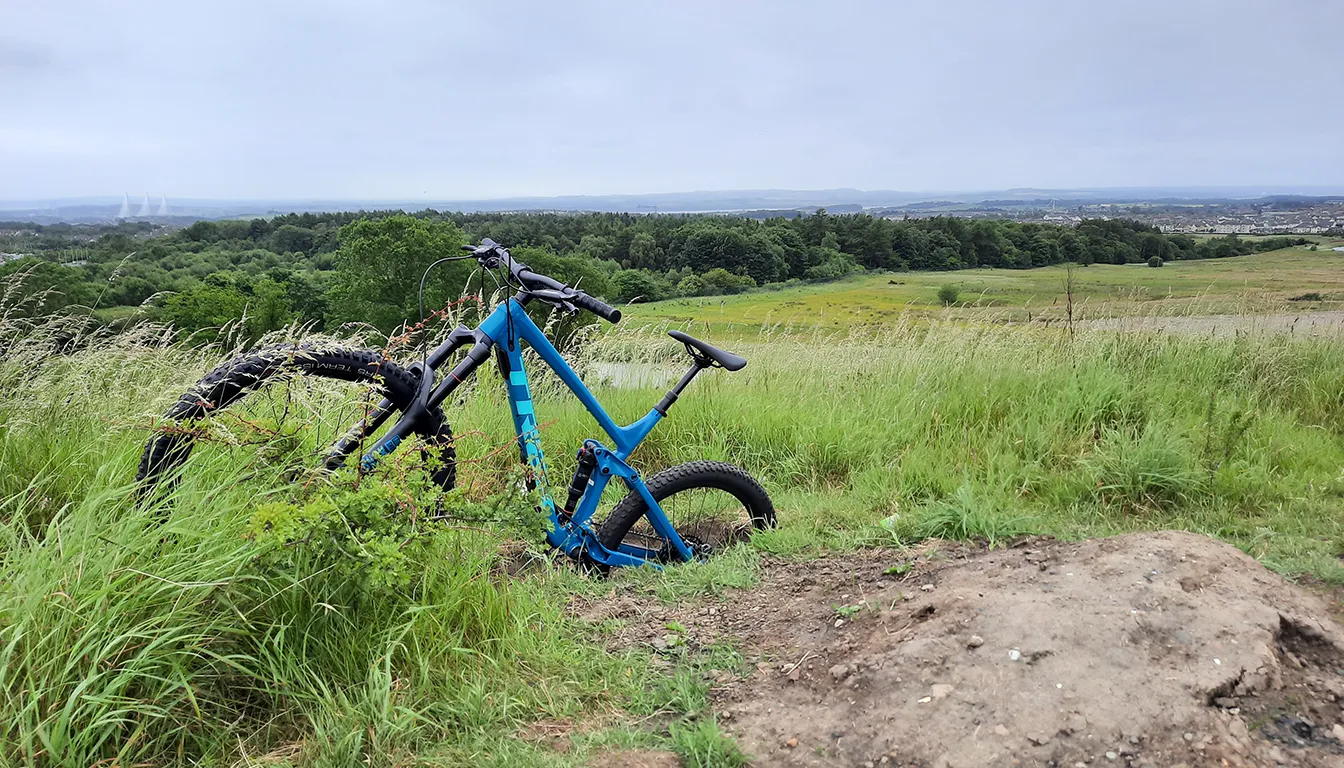Enduro mountain biking has grown popular among women, making it vital to know the ropes. This sport offers great outdoor adventures and challenges. With the right tips, female riders can enhance their performance, stay safe, and enjoy the ride on varied trails.
Knowing the terrain and picking the right bike is important. Effective training regimes are also key for any aspiring female biker. We will explore the best practices and tips to help women cyclists excel in enduro mountain biking.
Understanding Enduro Mountain Biking
Enduro mountain biking is a thrilling combination of endurance and skill. It’s great for riders who love tackling both downhill and uphill sections. It involves races with timed sections, known as Special Stages (SS), and untimed transfer segments. This setup lets riders show their speed on downhills and their skill in tough terrains. It’s quite different from other mountain biking types, like cross-country or downhill racing.
Enduro races usually cover 20-60 km and last between 3-4 hours, sometimes over two days. Riders need to prepare well to improve their chances of winning. Skills like endurance, strength, and quick sprinting are important for a great performance.
“Riders must adapt to diverse terrains and conditions while balancing speed and strategy.”
In enduro, cyclists face many challenges that need a special training and bike approach. Endurance workouts and strength and sprint training help get ready for these demanding races. With more women joining enduro events, understanding this sport is key for female cyclists aiming for success.
Getting the Right Bike for Enduro Riding
Choosing the right bike is key for enduro riding. You have to pick from different mountain bike types. This depends on what you like and the terrains you’ll ride on. There are full-suspension and hardtail bikes. Both have their pros and cons. So, picking the right one is crucial for a great ride.
Choosing Between Full-Suspension and Hardtail Bikes
In the full-suspension vs. hardtail debate, consider the trails you’ll face. Full-suspension bikes give a smooth ride on rough ground. They have 150-180mm suspension in the front and 140-165mm at the back. But they can be heavy, weighing 27-30+ lbs, which may not suit everyone. Hardtail bikes, on the other hand, are good for climbing but need careful handling when going downhill. Think about what you need and your budget to choose the best bike.
Importance of Bike Size and Fit
Getting a bike that fits right is crucial, especially for women. It affects comfort and how well you ride. Key things to look at are frame size and saddle height. These should let you fully extend your legs when pedalling. A bike that fits well prevents injuries and makes controlling the bike easier. Getting professional help to set up your bike right is a smart move. It helps boost your confidence and riding skills. For tips on choosing bikes and more, take a look at this guide on enduro mountain bikes.
Enduro Mountain Biking for Women: Key Tips
Starting enduro mountain biking can be both exciting and tough for women. By focusing on key areas, you can improve your trail experience and performance. Building endurance, doing functional training, and choosing the right gear are crucial steps.
Building Base Endurance
Building endurance is key for enduro racing success. Aim for two long rides weekly, each 2.5 to 3 hours. Keeping intensity low to moderate readies your body for enduro challenges. It boosts stamina and race efficiency, enhancing your cycling fitness.
Engaging in Functional Training
Functional training can significantly lift your enduro biking performance. Focus on strength exercises for cyclists, like squats, lunges, and deadlifts. These enhance fitness and power, crucial for handling enduro’s varied terrains. Joining gym workouts for mountain bikers with expert trainers can fine-tune your efforts.
Equipment Essentials for Women
The right gear matters a lot in enduro for women. Invest in women-specific cycling equipment for comfort and support. Key items include a fitting helmet, padded shorts, gloves, and shoes. Also, carry tools and repair kits for any surprises. Quality bike accessories for women boost comfort and trail performance, making biking much more enjoyable.
Choosing the Right Races and Events
Finding the right races can make mountain biking even more thrilling for women. A good enduro race guide shows you what’s out there. It helps you pick races that match how skilled you are. If you’re just starting, go for races with easier parts. This builds your skills and confidence. Knowing what you can handle helps you move up to tougher races slowly.
Selecting Races Based on Skill Level
It’s key to know what different races demand technically. Many prefer races that are not far from home. This was clear from feedback by over 6,400 riders about local trails. Riding with mates can make starting out less daunting and more fun. Distance to races matters to many. After all, enjoyment is often a big factor in deciding which races to enter.
Benefits of Racing with Friends
Racing in cycling events for women with friends builds a strong bond. Sharing the race experience can lessen stress and make great memories. Competing with friends often means you’re more focused and driven. The perks of riding together don’t stop at having fun. They can also push you to do better as you face the trail’s challenges together.
Training Techniques for Success
To do well in enduro racing, cyclists need the best training techniques. It’s about training in all kinds of weather and knowing the importance of food and drink.
Training in Various Weather Conditions
Adapting training to different weather is key. Challenges like rain, mud, and snow help improve skills. They also build confidence for racing on various surfaces.
This experience prepares you for any weather on race day. It’s crucial to try riding in different conditions. This makes you more versatile and skilled across many terrains.
Effective Nutrition and Hydration Strategies
Nutrition is vital for top cycling performance. Keeping energy up during long rides is essential. Female cyclists should eat quick snacks, like fruit or energy gels, every 30-40 minutes.
Staying hydrated is just as important. Drinking about one litre of water every hour while cycling is good. Planning meals and hydration before races can boost your performance and confidence.
Improving your trail riding starts with picking the right trails. Check out popular UK mountain bike trails that fit your skills and likes.
Staying Safe and Having Fun on the Trails
It’s vital to stay safe while you enjoy mountain biking. Following cycling trail etiquette improves your ride and keeps things friendly with other trail users. This means giving way to walkers and others, and following the rules, which shows mountain biking respect. Safe biking practices make the trip better for everyone.
Understanding Trail Etiquette
Cycling trail etiquette includes key rules for smooth sharing of the trails:
- Always yield to hikers, runners, and equestrians.
- Step off the trail if you need to stop, to keep it safe for others.
- Don’t skid or cut across trails to stop harming the environment.
- Be respectful on private land to prevent trail closures.
The Importance of Protective Gear
Using the right biking safety gear is key for protection. You should wear:
- Helmets with technology like MIPS for better impact safety.
- Knee pads to protect your joints if you fall.
- Breathable jerseys, such as the Kaden Apparel Gryla, to keep you dry.
- Padded shorts, like Terry Prima Bella Shorts, for comfort on long rides.
- Gloves that boost your grip and absorb shocks, preferably with extra palm and knuckle safety.
- Footwear with sticky rubber soles for better control on flat pedals.
For women’s cycling safety, well-fitting and stylish gear can also make you feel more confident. Focusing on protective equipment for mountain biking increases your safety and improves the sport for everyone.
Conclusion
Enduro mountain biking offers both challenge and adventure. It’s a great choice for women cyclists wanting to push their limits. By following the tips in this article, riders can improve their skills and feel more confident. This includes knowing how your bike works and learning the right way to position yourself.
More women joining enduro races shows how welcoming the cycling community is. Events like Red Bull Formation highlight this growing trend. These changes celebrate the hard work of female athletes and those supporting them. They help make the sport more inclusive for everyone.
Companies like Liv and Atherton Bikes are making products specifically for women. This makes it easier to find the right gear. Getting into enduro mountain biking and connecting with other cyclists brings joy and breaks down barriers. To get better, check out this helpful resource for biking techniques.
FAQ
What are the key benefits of enduro mountain biking for women?
Enduro mountain biking is a thrilling way for women to stay fit. It builds endurance and cycling skills. It also fosters a sense of community and support among female riders. This helps build confidence and enjoy the sport.
How do I select the best bike for enduro riding?
Choosing the right bike means considering how you ride, your budget, and if you prefer full-suspension or hardtail bikes. Full-suspension bikes absorb bumps better, useful on rough trails. Hardtails can be better for climbing.
What kind of training should I focus on for enduro mountain biking?
Building endurance is key. Include two long rides a week in your routine. Add exercises like squats and lunges for strength. This mix boosts fitness and power for varied terrains.
How can I ensure a proper bike fit?
Getting the right bike fit means checking the frame size and saddle height. This ensures you can pedal comfortably. Consulting a bike fitting expert can also help prevent injuries and improve comfort and control.
What are some tips for racing with friends?
Racing with friends can make the experience more fun and supportive. It boosts motivation and teamwork. It also helps reduce stress and make races more memorable.
How should I prepare for different weather conditions?
Adjust your training to cope with rain, mud, or snow. Getting used to different conditions builds confidence. It improves your skills for any weather you face in races.
What should I pack for an enduro ride?
Always wear a fitting helmet, gloves, padded shorts, and trail shoes. Also, carry tools and repair kits for any trailside issues. Being prepared is essential.
Why is nutrition and hydration important in enduro biking?
Nutrition and hydration keep your energy up and performance high. Eat snacks every 30-40 minutes. Drink about one litre of water every hour to stay hydrated and focused.
What do I need to know about trail etiquette?
Be considerate on the trails. Yield to hikers and keep noise down. Stick to the rules. Good manners make trails enjoyable for everyone and enhance your experience.
What type of protective gear is necessary for enduro mountain biking?
Wear a helmet, knee pads, and suitable clothes to protect yourself from falls. High-quality safety gear is important. It reduces risk and lets you enjoy biking safely.
